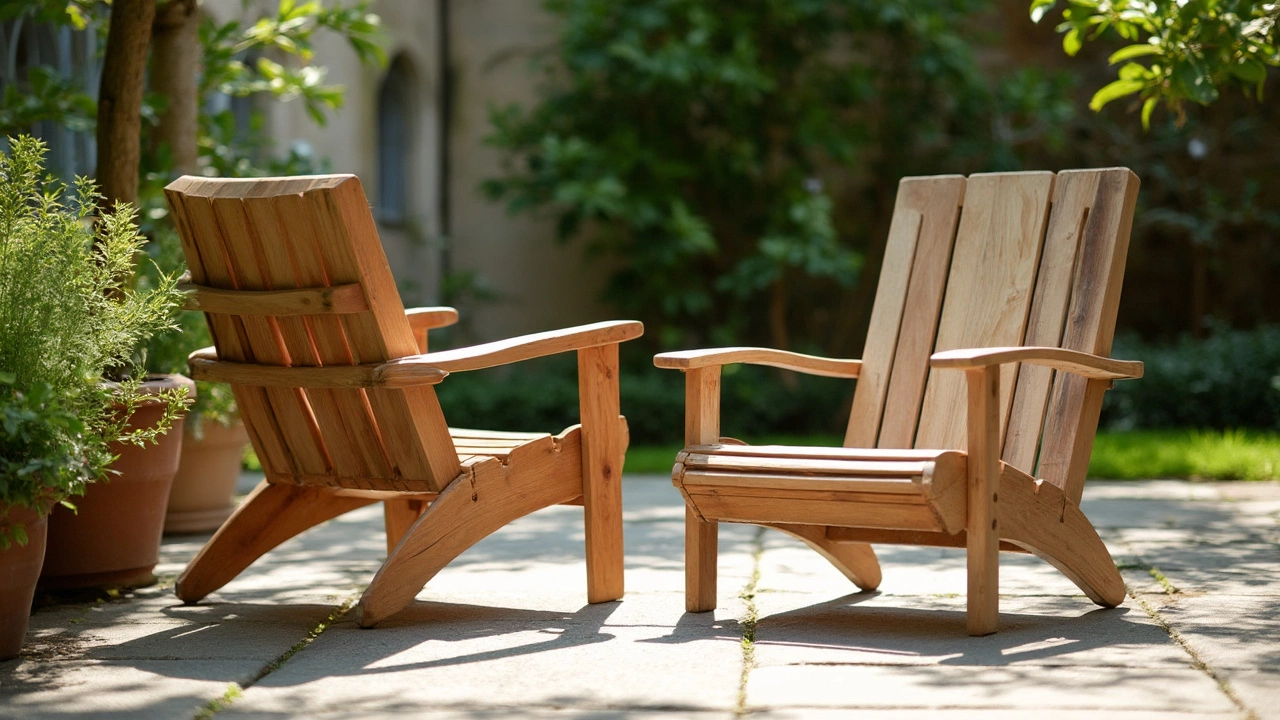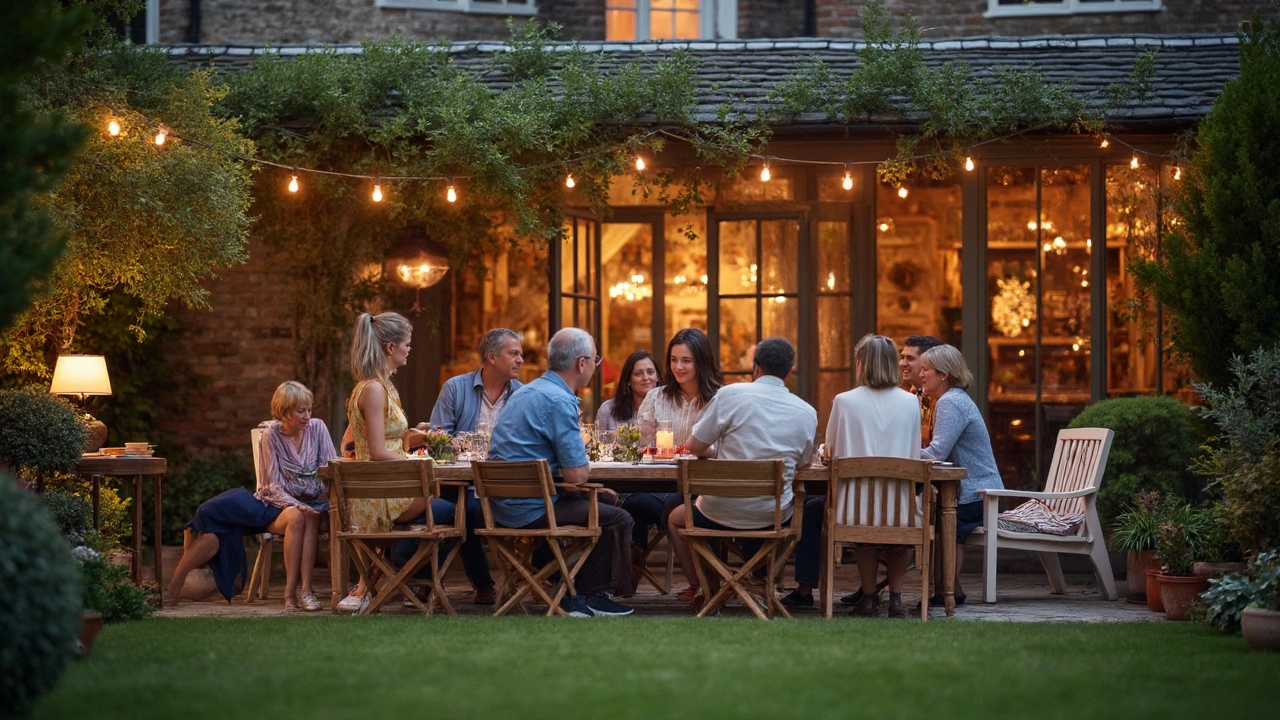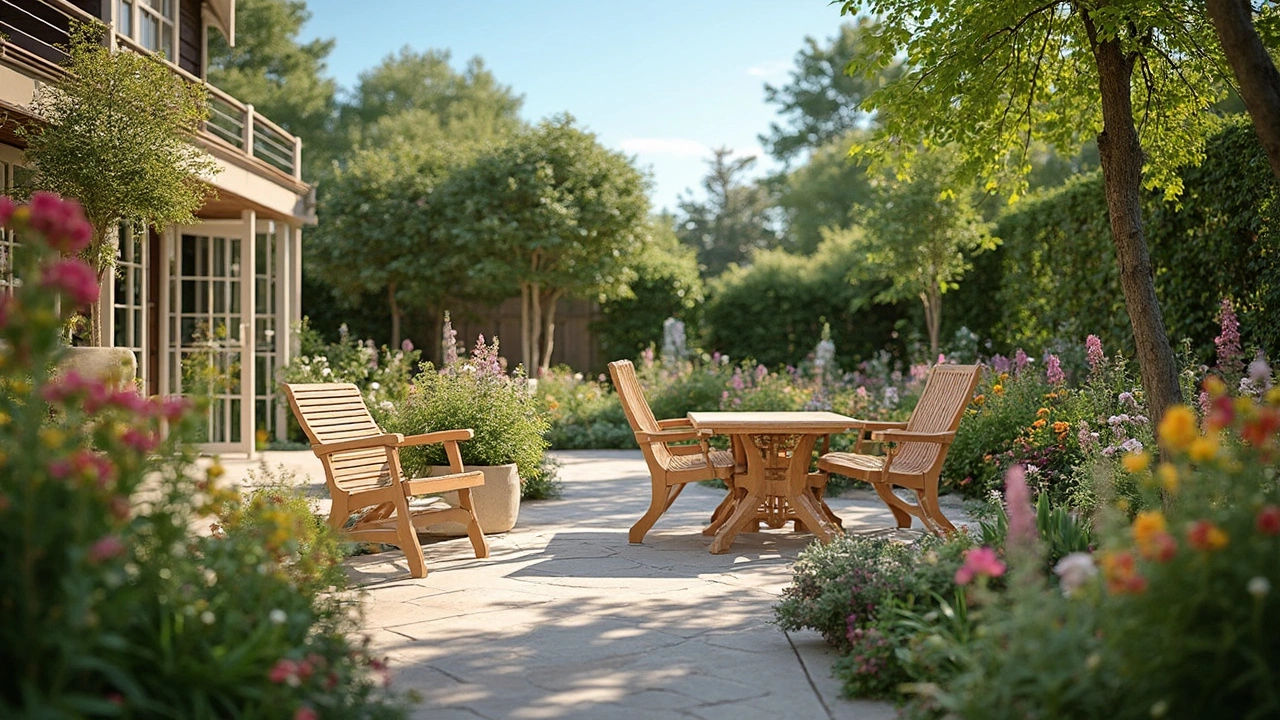If you hang out in your backyard as much as I do, you've probably noticed how POLYWOOD has become a big name in garden furniture. Their stuff is known for being both tough and eco-friendly. But they aren't the only game in town, even though it might seem like it sometimes.
One brand that stands shoulder-to-shoulder with POLYWOOD is Trex Furniture. Much like our pals at POLYWOOD, Trex prides itself on creating sustainable furniture that doesn't sacrifice style for the sake of the planet.
But let's not just take marketing pitches at face value. It's worth digging into why you might choose one over the other. Is POLYWOOD's secret sauce better than Trex's recipe? They both use composite materials, but there's more to it than that.
Understanding these differences isn't just about nerding out on furniture facts. It could save you money and ensure your patio looks fantastic for years. We'll get into the nitty-gritty soon, but one thing's for sure—both brands are shaking up what we expect from a patio set.
- The Rise of POLYWOOD
- Identifying the Main Competitor
- Why It Matters: Quality Comparison
- Sustainability in Outdoor Furniture
- What to Look for When Shopping
The Rise of POLYWOOD
Once upon a time in Indiana, a couple of guys had a bright idea to turn recycled plastics into something more than just landfill filler. And voilà, POLYWOOD was born in the late '80s. They started out making those classic Adirondack chairs, and let me tell you, those bad boys are everywhere now!
What really sets POLYWOOD apart in the garden furniture space is their sustainable approach. Plastic waste is a massive problem, but POLYWOOD recycles tons of it to create their products. Their furniture is made from high-density polyethylene (HDPE) and it's designed to withstand the elements, which means it can last way longer than traditional wood furniture.
Beyond their eco-friendly creds, POLYWOOD's furniture is known for being low-maintenance. Unlike wood, it doesn't splinter, warp, or need painting or staining. That means more time chilling on your patio and less time doing upkeep. Sounds like a win, right?
Also, it's interesting how their production process stacks up. They've got super-efficient factory practices that keep their carbon footprint lower than you'd expect. And they like to keep things local, mostly sourcing and producing in the U.S., which is kind of a big deal given today's global economy.
Here's the kicker, though: imagine lounging on furniture that not only looks good but also feels good knowing it's contributing to a more sustainable world. That's the magic of POLYWOOD, and it's why they've become a dominant force in the garden furniture industry.
Identifying the Main Competitor
When you're talking about POLYWOOD in the vibrant world of garden furniture, an obvious question comes up: Who's their biggest challenger? Well, one name that often pops up in conversations is Trex Furniture. They’re not just another rival; they share the same eco-friendly approach that makes POLYWOOD so popular.
Trex has an interesting backstory. They started in 1996 and have been all about going green before it was cool. They're known for making their furniture from a blend of reclaimed wood and plastic, similar to POLYWOOD's recycled milk jugs method. This keeps both brands at the forefront of sustainability, making them top choices for folks mindful of their environmental footprint.
Now, why don't we compare these two? In terms of durability, both brands are somewhat like the superheroes of outdoor furniture. They stand up to weather extremes and resist fading, cracking, or chipping. Trex, however, puts a little extra shine on customizing options with a broader range of colors and styles.
Still, the price tags can tell a different story. While POLYWOOD generally offers premium products at a hefty price, Trex tends to be a tad more budget-friendly, attracting those who want quality without breaking the bank.
Is one better than the other? It often boils down to personal preference. Some people love the sleek, classic lines of POLYWOOD, while others lean towards the more varied styles and competitive pricing of Trex. Either way, knowing these players and their offerings is a win for anyone trying to spruce up their backyard.”

Why It Matters: Quality Comparison
Alright, let's talk quality, because you don't want to drop cash on garden furniture that fades or cracks after just one season. POLYWOOD has carved out a solid reputation for delivering tough, weather-resistant pieces that can handle whatever the skies throw at them. But what's the real difference when you stack it against Trex Furniture?
Both brands boast composite materials that mimic the beauty of wood without the maintenance hassles. POLYWOOD uses recycled plastic to create a durable, fade-resistant lumber. This makes it stand out to those who care about sustainability and long-lasting durability on their patios.
On the flip side, Trex also champions its eco-friendly approach by using a blend of recycled wood and plastic. This means their furniture also offers top-notch resistance to the elements. So, if you’re looking to invest in outdoor pieces that can withstand sun, rain, and snow, both options are strong contenders, but their material blend is where you might see slight variances in texture and weight.
Now, let's look at comfort and design. While both brands offer a variety of styles, it's often POLYWOOD's classic New England aesthetic that wins hearts. Trex tends to lean towards more modern lines, which can appeal if you’re in the mood for something sleek and contemporary.
But here's an extra nugget of info worth chewing on: check out the warranty each offers. POLYWOOD generally offers a 20-year warranty on residential products, which speaks volumes about their confidence in quality. Trex isn't far behind, with similar guarantees that promise replacements for defects or failure under normal use conditions.
If you're trying to decide, it often comes down to personal preference—classic charm or modern sleekness—and how much emphasis you place on the exact materials and feel under your fingers. Both brands promise quality, but choosing between them means considering the little differences that add up long-term value.
Sustainability in Outdoor Furniture
When it comes to decking out your garden, sustainability is more than just a buzzword. In fact, it's rapidly shaping how we buy outdoor furniture these days. Both POLYWOOD and its competitors like Trex are putting a lot of effort into eco-friendly practices, and for good reason. Nobody wants their backyard paradise to contribute to landfill problems or deforestation.
POLYWOOD, for instance, crafts its furniture from high-density polyethylene (HDPE) made from recycled plastics. That means your cozy garden chairs could once have been milk jugs or detergent bottles. How cool is that? This approach not only makes use of materials that would otherwise clutter the earth but also produces furniture that’s known for its durability and weather resistance.
Trex, on the other hand, uses a blend of 95% recycled wood and plastic film. Their process saves around 400 million pounds of plastic and wood scrap from landfills annually. Talk about making a difference! Additionally, by avoiding the need for harmful chemicals often required in treating wooden furniture, they keep the production process considerably greener.
Here’s something to think about if you’re shopping for garden furniture: look for products certified by independent organizations, such as the Forest Stewardship Council (FSC) for wood or Global Recycled Standard (GRS) for recycled materials. These certifications ensure you're buying sustainably sourced or recycled products.
Investing in sustainable furniture not only helps the planet but often means getting high-quality, long-lasting pieces. It’s a win-win. Before you hand over your cash, ask yourself these questions:
- Is the furniture made with recycled or renewable materials?
- Does the company have environmental certifications?
- Are there chemicals involved that could harm the environment?
- What is the furniture's lifespan and can it be recycled at the end of its life?
Being mindful of these factors can make your outdoor space both beautiful and eco-friendly, supporting brands that care for the environment as much as their customers.

What to Look for When Shopping
Shopping for garden furniture can be as easy as pie if you know what exactly to keep an eye out for. With big players like POLYWOOD and Trex Furniture in the mix, knowing your stuff helps ensure you make the right choice for your backyard oasis.
First up, think about the materials. PLOYWOOD is famous for its use of recycled plastics that mimic the look and feel of wood. It's eco-friendly and requires very little maintenance. Trex also uses eco-conscious materials, but make sure to check the specs on durability and weather resistance.
Next, comfort is king. Sit down if you can, or check reviews for comments about how cozy those chairs really are. After all, if you're not comfortable, what's the point?
Durability is the name of the game when it comes to outdoor furniture. Check if the materials can withstand the elements in your area—rain, intense sun, or even snow. Both POLYWOOD and Trex claim to handle the weather well, but always good to ask or read what others say.
- Don’t forget about style and space. Look at your available room and choose pieces that'll fit your aesthetic. If you’ve got a minimalist theme going, modern lines might feel right at home. Prefer something more rustic? There’s a POLYWOOD series for that.
- Watch out for warranties, too. A solid warranty can tell you a lot about a company’s confidence in its products. POLYWOOD often offers a 20-year limited warranty on their products, giving you peace of mind.
- Price is always a factor. Great sales pop up often, so it’s worth waiting if you're not in a rush. You might find that your dream outdoor furniture set becomes much more affordable.
Being smart about these factors can lead to a purchase you'll love for years. Just imagine chilling with a cold drink, knowing your outdoor setup is just right. That's the kind of win we're talking about.


Write a comment